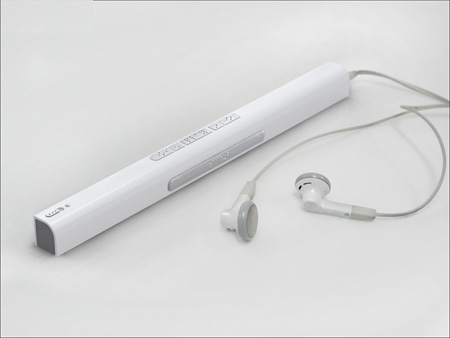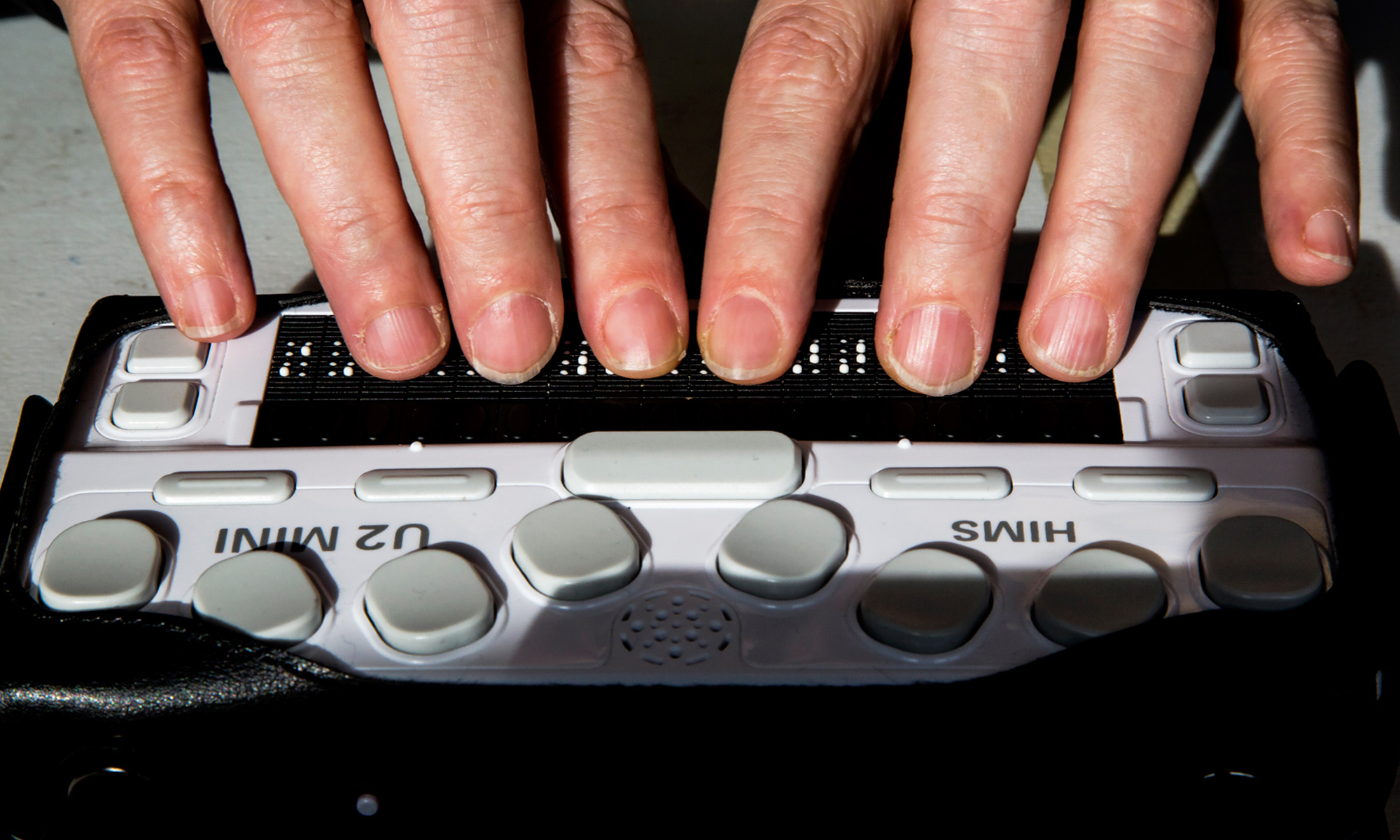OCR Devices for the Blind: Turning Text into Speech with Ease
OCR Devices for the Blind: Turning Text into Speech with Ease
Blog Article
Discover Innovative Devices Designed for the Visually Impaired
The development of cutting-edge tools for the visually impaired stands for a considerable development in accessibility and independence. Technologies such as smart glasses with AI abilities and mobile applications created to give auditory summaries are reshaping day-to-day experiences for individuals.
Smart Glasses for Navigating

Smart glasses created for navigation are changing the means aesthetically impaired people interact with their atmosphere. These advanced gadgets utilize a combination of video camera innovation, fabricated intelligence, and auditory feedback to offer real-time details about environments. By using obstacle discovery systems, smart glasses can signal customers to potential dangers, allowing much safer mobility in both acquainted and unknown setups.
The combination of GPS technology additionally boosts navigating capabilities, enabling individuals to obtain acoustic instructions as they move. This hands-free strategy not only fosters independence however also empowers aesthetically damaged individuals to browse city landscapes with enhanced self-confidence. Furthermore, several smart glasses are geared up with attributes that identify sites and road indicators, supplying contextual information that boosts the customer experience.
Additionally, the development of these gadgets is continuously progressing, with business functioning to enhance the accuracy of object recognition and increase the series of navigational functions. As clever glasses end up being more inexpensive and easily accessible, they hold the prospective to dramatically transform day-to-day life for aesthetically impaired users. Eventually, these innovative tools represent a crucial action toward inclusivity, offering boosted wheelchair and a higher sense of freedom for individuals browsing the globe around them.

Mobile Application for Daily Living
Just how can mobile applications enhance the day-to-day lives of aesthetically damaged people? Mobile apps are changing the way aesthetically damaged individuals browse their atmospheres, manage daily tasks, and access info. These applications provide necessary assistance through numerous performances, cultivating freedom and improving top quality of life.
A number of cutting-edge mobile applications are developed particularly for everyday living. As an example, apps like Be My Eyes attach visually impaired customers with sighted volunteers using video clip telephone calls, allowing them to obtain real-time help with tasks such as reviewing labels or navigating unfamiliar rooms. Seeing AI, established by Microsoft, uses artificial knowledge to describe surroundings, reviewed message, and determine objects, successfully transforming a smartphone right into a powerful tool for daily help.
Furthermore, navigation apps tailored for the visually impaired, such as Aira and BlindSquare, offer audio-based instructions and environmental info, allowing users to traverse their environments securely and with confidence. Past navigation and immediate aid, mobile apps additionally sustain company and job administration, with attributes that help customers set pointers, create to-do checklists, and track visits. In summary, mobile applications work as crucial resources, equipping aesthetically impaired individuals to lead more independent and fulfilling lives.
Wearable Technologies for Assistance
Empowerment with technology is increasingly evident in the realm of wearable tools created to aid visually damaged individuals. These cutting-edge devices integrate perfectly right into day-to-day live, enhancing navigation and providing vital feedback to customers. Smart glasses here equipped with video cameras can identify faces and review text aloud, allowing individuals to connect more confidently in specialist and social settings.
One more noteworthy improvement is using haptic feedback systems in wearable gadgets. These systems use vibrations or other tactile signals to share info regarding the customer's setting, such as barriers or modifications in terrain, boosting flexibility and safety. Wearable modern technologies likewise include wristbands that connect to smartphones, alerting customers to alerts via refined vibrations, therefore enhancing connection without dependence on visual signs.
As these technologies remain to evolve, they are not just improving self-reliance for visually impaired people but also cultivating a better sense of inclusion in culture. By bridging the void in between challenges faced in day-to-day living and the capacity for freedom, wearable technologies work as pivotal tools in the pursuit for equality and empowerment for those with aesthetic disabilities.
Audio Summary Tools
Sound description tools play an essential duty in boosting ease of access for aesthetically damaged individuals, providing them with the capacity to involve with aesthetic media. Mobility aids for visually impaired users. These tools provide view it now narrated descriptions of vital aesthetic aspects in movies, tv shows, and live efficiencies, making sure that customers can totally comprehend the context and emotions conveyed through visuals
Sound summary can be incorporated right into different platforms, including streaming services, cinema testings, and live theater. Lots of popular streaming services now consist of audio summary as an availability attribute, permitting customers to select it quickly. Along with traditional media, specialized applications additionally exist, providing audio summaries for art exhibits, museums, and other social events.
The effectiveness of audio description hinges on the skill of the storytellers, that have to convey visual details succinctly without taking away from the initial sound. Technologies in this field are likewise leading the way for even more personalized experiences, where customers can readjust the level of detail and pacing according to their preferences.
Braille Innovations and Gadgets
Braille developments and devices have actually significantly transformed the way visually damaged people engage with message and details. Modern innovations have led to the growth of versatile tools that boost proficiency and independence amongst users.
Furthermore, portable Braille notetakers combine typical Braille input with modern-day performances, assisting in note-taking, organizing, and file modifying on the move. Assistive technology for the blind. These portable gadgets often include text-to-speech capabilities, connecting the gap between Braille and acoustic information
Furthermore, innovative Braille printers like it have arised, allowing customers to create Braille tags, records, and instructional products successfully. This ease of access promotes higher involvement in academic and expert environments, inevitably promoting inclusivity.
Moreover, study into smart Braille innovations continues to expand. Instruments that include synthetic knowledge are being checked out to provide real-time navigation assistance and contextual details, enhancing the customer experience in varied settings. Overall, these developments reflect a commitment to encouraging visually impaired people with technology, ensuring they can quickly access and involve with the world around them.

Verdict
The innovation of cutting-edge devices for the aesthetically impaired considerably boosts independence and lifestyle. Smart glasses, mobile applications, wearable modern technologies, audio description devices, and Braille technologies jointly empower people by providing crucial navigating support, ecological recognition, and enhanced reading experiences. These modern technologies not only foster higher inclusion yet likewise promote freedom in everyday activities, eventually adding to a more equitable and accessible society for aesthetically damaged people. Continued growth in this field holds pledge for additional enhancements.
As clever glasses come to be more inexpensive and available, they hold the prospective to dramatically transform daily life for visually impaired customers. Mobile applications are changing the way visually impaired users browse their settings, manage daily tasks, and access info. Applications like Be My Eyes attach aesthetically impaired users with sighted volunteers through video clip telephone calls, enabling them to obtain real-time aid with tasks such as reading labels or navigating strange areas.Furthermore, navigating applications customized for the visually damaged, such as Aira and BlindSquare, supply audio-based directions and ecological details, making it possible for users to traverse their environments safely and with confidence.The advancement of innovative devices for the aesthetically impaired considerably improves self-reliance and top quality of life.
Report this page